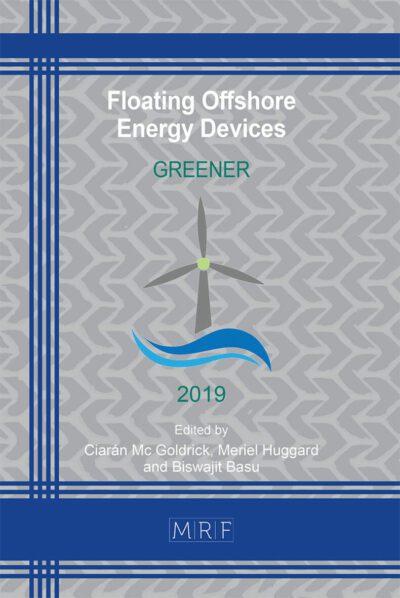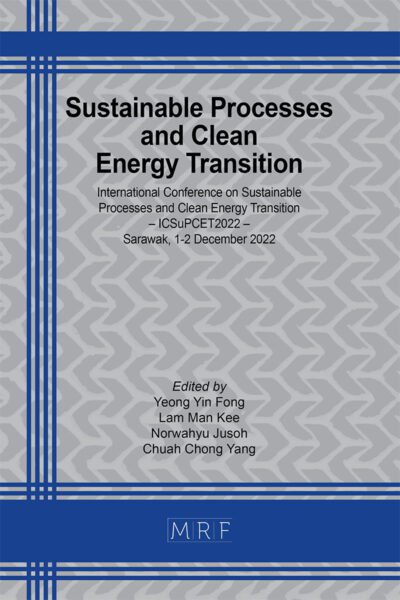Integrating stochastic effects and uncertainties into inverse analysis of hot bulk forging processes through automated API-driven finite element simulations and machine learning
Artem Alimov, Yuyao Jiang, Markus Gardill, Sebastian Härtel
Abstract. At present, finite element simulation and inverse analysis are widely used for the design and analysis of metal forming processes, allowing the identification of possible defects at the pre-production stage and realizing the “First Part – Good Part” strategy. However, the forging process is generally considered in FEM simulations as a deterministic process without taking into account variations in material properties and process parameters, which leads to reduced forgings quality and process reliability. Considering uncertainties and stochastic effects is one of the major challenges in FEM simulations. Inverse analysis can be used to identify, characterize and integrate the uncertainties and stochastic effects into forging process analysis. Several works have attempted to include stochastic effects into sheet metal forming simulation as well as simulation of hot forging of turbine blades. However, issues of automating and utilizing inverse analysis in this field remain open and require further development. This paper develops an approach for analyzing uncertainties and stochastic effects based on automated API-driven finite element simulations. A control code that automatically varies the dimensions, position and orientation of the workpiece as well as process parameters, starts the simulation and performs automatic evaluation of the simulation results has been developed. Based on the obtained dataset, a parameter sensitivity analysis was performed and the relative importance of each parameter on the formation of defects such as folding or underfilling was determined. The developed approach is further verified through experimental trials on an industrial screw press equipped with a data acquisition system.
Keywords
Stochastic Effects, Hot Bulk Forging, Inverse Analysis, FE-Simulation, Machine Learning
Published online 5/7/2025, 10 pages
Copyright © 2025 by the author(s)
Published under license by Materials Research Forum LLC., Millersville PA, USA
Citation: Artem Alimov, Yuyao Jiang, Markus Gardill, Sebastian Härtel, Integrating stochastic effects and uncertainties into inverse analysis of hot bulk forging processes through automated API-driven finite element simulations and machine learning, Materials Research Proceedings, Vol. 54, pp 1528-1537, 2025
DOI: https://doi.org/10.21741/9781644903599-165
The article was published as article 165 of the book Material Forming
![]() Content from this work may be used under the terms of the Creative Commons Attribution 3.0 license. Any further distribution of this work must maintain attribution to the author(s) and the title of the work, journal citation and DOI.
Content from this work may be used under the terms of the Creative Commons Attribution 3.0 license. Any further distribution of this work must maintain attribution to the author(s) and the title of the work, journal citation and DOI.
References
[1] J.-L. Chenot, M. Bernacki, P.-O. Bouchard, L. Fourment, E. Hachem, E. Perchat, Recent and future developments in finite element metal forming simulation, in: Nagoya, Japan, 2014.
[2] A. Andrade-Campos, S. Coppieters, M. Strano, Optimization and inverse analysis in metal forming: scientific state-of-the-art and recent trends, Int J Mater Form 15 (2022) 44. https://doi.org/10.1007/s12289-022-01690-8
[3] J. Chenot, E. Massoni, JL. Fourment, Inverse problems in finite element simulation of metal forming processes, Engineering Computations 13 (1996) 190–225. https://doi.org/10.1108/02644409610114530
[4] M.H.A. Bonte, L. Fourment, T. Do, A.H. Van Den Boogaard, J. Huétink, Optimization of forging processes using Finite Element simulations: A comparison of Sequential Approximate Optimization and other algorithms, Struct Multidisc Optim 42 (2010) 797–810. https://doi.org/10.1007/s00158-010-0545-3
[5] L.C. Sousa, C.F. Castro, C.A.C. António, A.D. Santos, Inverse methods in design of industrial forging processes, Journal of Materials Processing Technology 128 (2002) 266–273. https://doi.org/10.1016/S0924-0136(02)00464-8
[6] W.L. Oberkampf, S.M. DeLand, B.M. Rutherford, K.V. Diegert, K.F. Alvin, Error and uncertainty in modeling and simulation, Reliability Engineering & System Safety 75 (2002) 333–357. https://doi.org/10.1016/S0951-8320(01)00120-X
[7] M. Liewald, T. Bergs, P. Groche, B.-A. Behrens, D. Briesenick, M. Müller, P. Niemietz, C. Kubik, F. Müller, Perspectives on data-driven models and its potentials in metal forming and blanking technologies, Prod. Eng. Res. Devel. 16 (2022) 607–625. https://doi.org/10.1007/s11740-022-01115-0
[8] D.M. D’Addona, D. Antonelli, Neural Network Multiobjective Optimization of Hot Forging, Procedia CIRP 67 (2018) 498–503. https://doi.org/10.1016/j.procir.2017.12.251
[9] T.-L. Wu, Y.-C. Hwang, W.-X. Zhang, Machine learning-based model for detecting uneven wear and temperature deviation events in hot forging process, Int J Adv Manuf Technol 119 (2022) 2743–2761. https://doi.org/10.1007/s00170-021-08256-z
[10] R.G. Snape, S.E. Clift, A.N. Bramley, Sensitivity of finite element analysis of forging to input parameters, Journal of Materials Processing Technology 82 (1998) 21–26. https://doi.org/10.1016/s0924-0136(98)00005-3
[11] U. Engel, Prediction of tool failure from a probabilistic point of view, Journal of Materials Processing Technology 42 (1994) 1–13.
[12] J. Koch, R. Völkl, U. Engel, Effective Stochastic Simulation for the Optimization of Time, Costs and Quality in Cold Forging, Int J Mater Form 1 (2008) 9–12. https://doi.org/10.1007/s12289-008-0059-3
[13] B.-A. Behrens, W. Volk, D. Maier, L. Scandola, M. Ott, K. Brunotte, C. Büdenbender, M. Till, A Combined Numerical and Experimental Investigation on Deterministic Deviations in Hot Forging Processes, Procedia Manufacturing 47 (2020) 295–300. https://doi.org/10.1016/j.promfg.2020.04.231
[14] B. Lu, H. Ou, Stochastic finite-element modelling and optimization for net-shape forging of three-dimensional aero-engine blades, Proceedings of the Institution of Mechanical Engineers, Part L: Journal of Materials Design and Applications 225 (2011) 71–85. https://doi.org/10.1177/1464420711398607
[15] H. Müllerschön, W. Roux, D. Lorenz, K. Roll, Stochastic analysis of uncertainties for metal forming processes with LS-OPT, Proceedings NUMISHEET, Interlaken, Switzerland (2008).
[16] P. Brix, M. Liewald, J. Eckstein, Predicting springback variation and process-reliable tolerance limits of outer car-body panels by stochastic sheet metal forming simulation, IOP Conf. Ser.: Mater. Sci. Eng. 1157 (2021) 012092. https://doi.org/10.1088/1757-899x/1157/1/012092
[17] L. Breiman, Random forests, Machine Learning 45 (2001) 5–32.
[18] S. Lundberg, S.-I. Lee, A Unified Approach to Interpreting Model Predictions, (2017). https://arxiv.org/abs/1705.07874
[19] Y. Jiang, A. Alimov, M. Knaack, S. Härtel, M. Gardill, Data-driven Approaches for Predicting Underfill in Hot Bulk Forging Processes, in: The 28th International ESAFORM Conference on Material Forming, Paestum, Italy, 2025.














